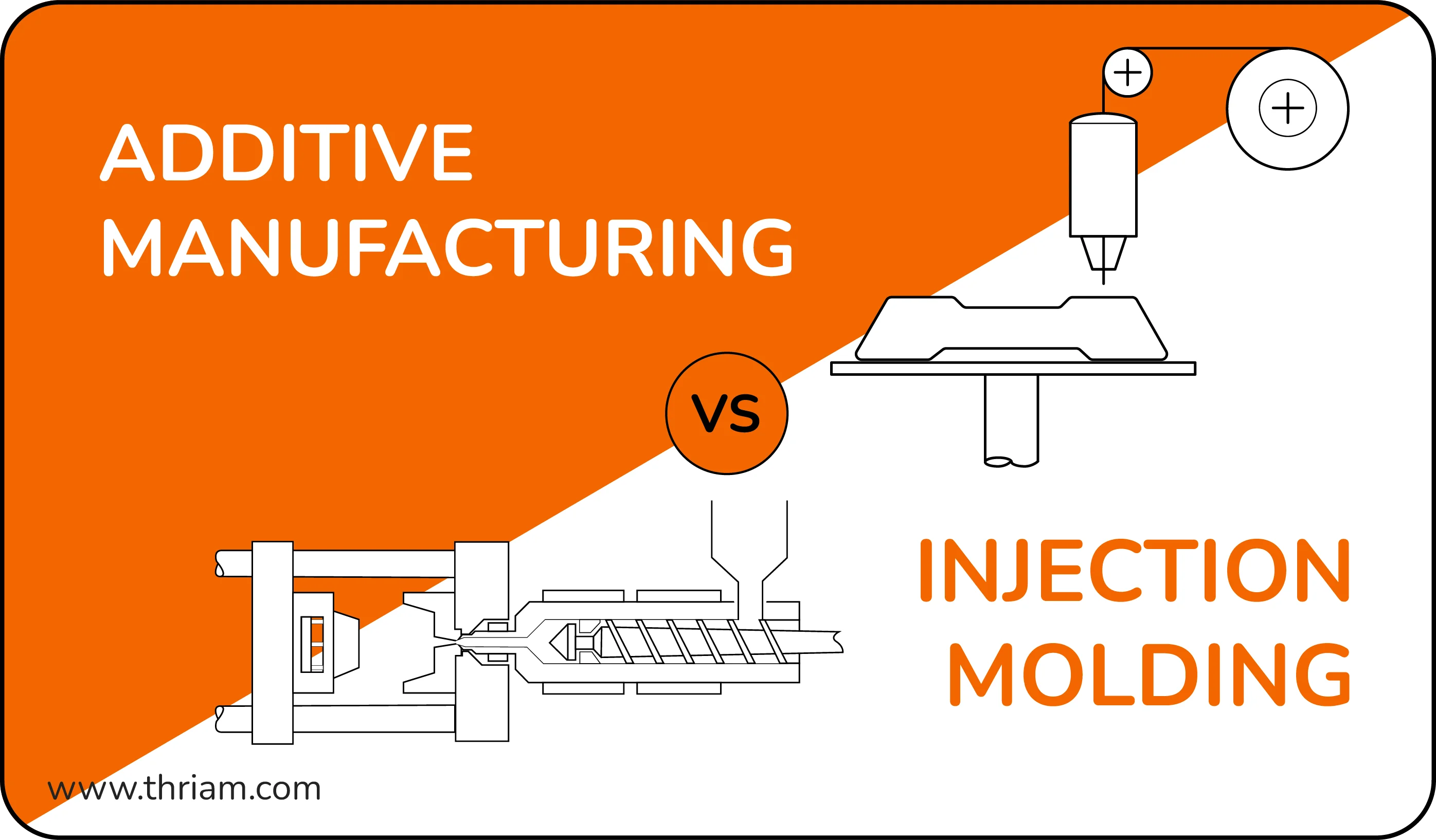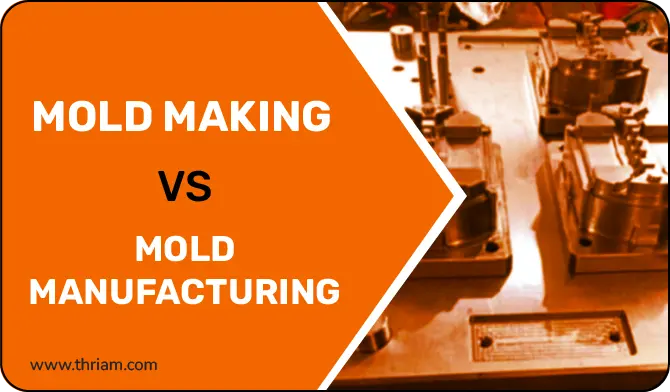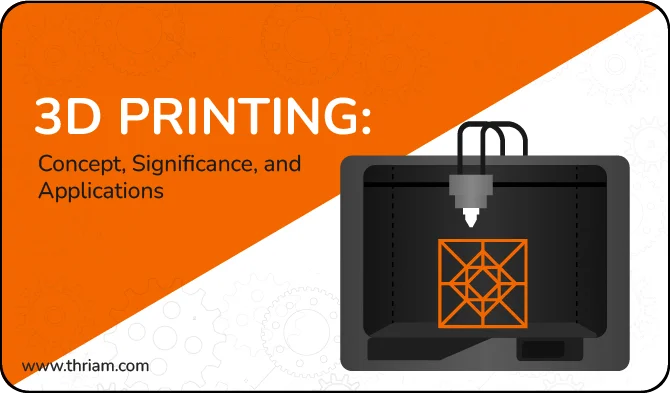Difference between Compression moulding vs Injection molding
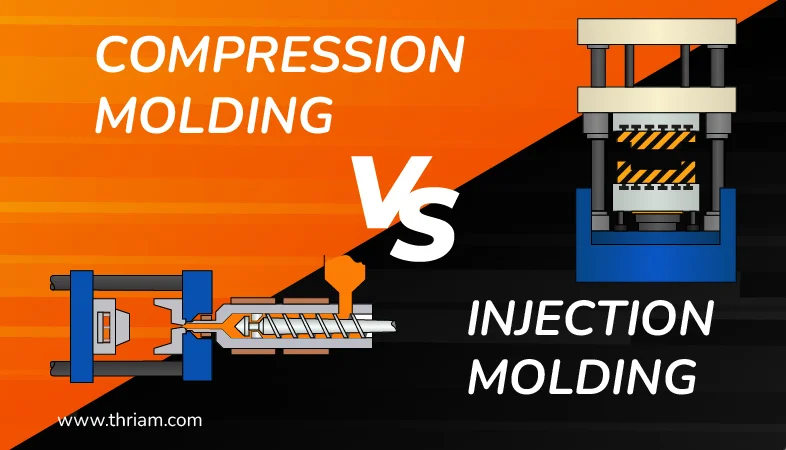
Compression Moulding
Compression moulding process, advantages, limitations and applications
Compression molding is among the oldest materials processing techniques. In commercial use, compression moulding is the most simple and reliable process. Due to its simplicity and availability, it is most widely used process
Compression molding is the process of molding in which a preheated polymer is placed into an open, heated mold cavity. The mold is then closed with a top plug and compressed in order to have the material contact all areas of the mold.
It is a high pressure forming process in which the molten plastic material is squeezed directly into a mould cavity, by the application of heat and pressure to conform to the shape of the mold
This process is able to produce parts with a wide array of lengths, thicknesses, and complexities. The objects it produces are also high in strength, making it an attractive process for a number of different industries.
Thermoset composites are the most common type of material used in compression molding.Compression molding is thus commonly used for thermosetting plastics such as phenolics, urea, melamine, an alkyds; it is not ordinarily used for thermoplastics.
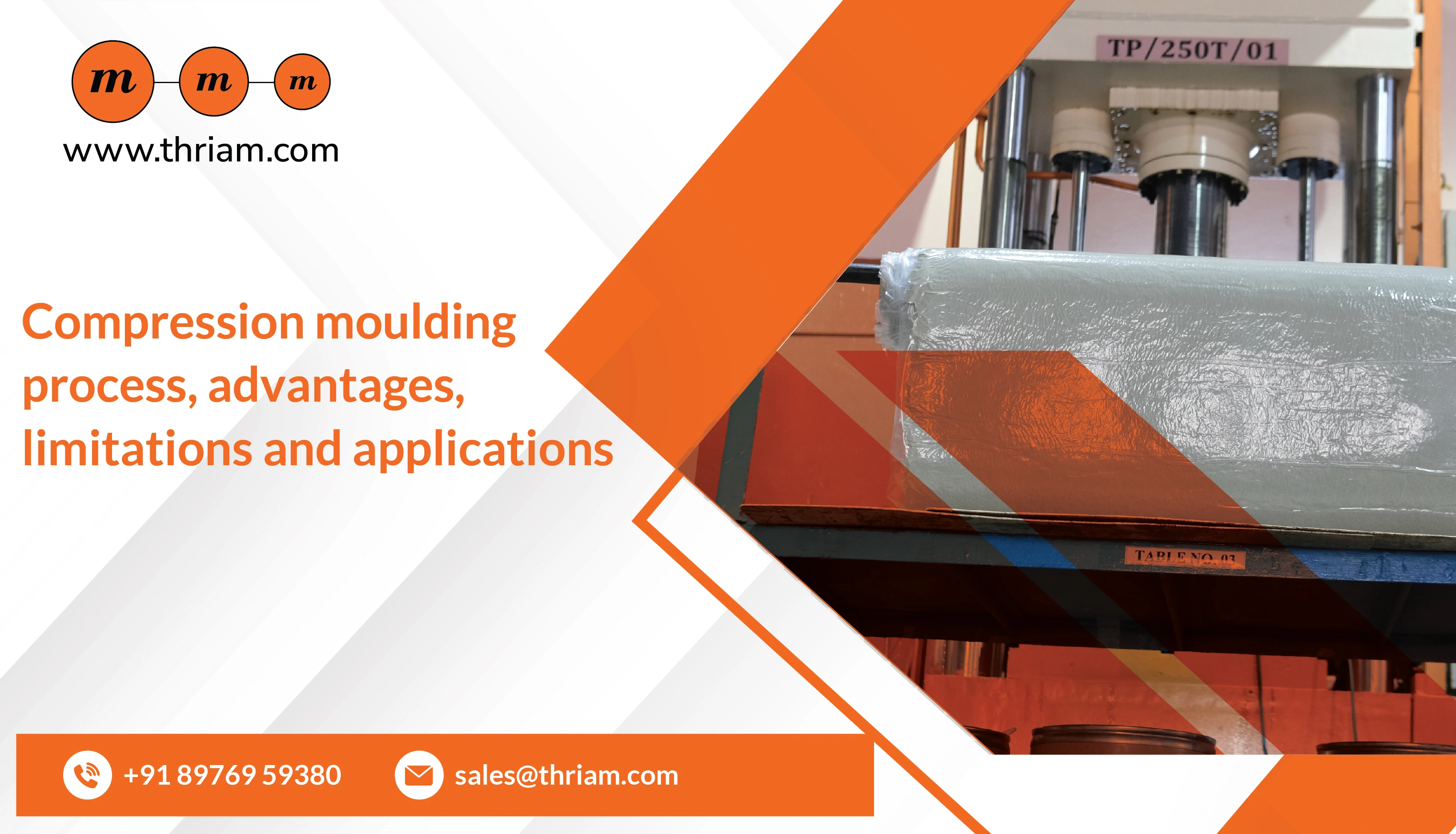
Process parameters
Important factors to be considered before compression molding process are:
- Amount of plastic material (charge).
- Heating time
- Melting temperature of plastic material.
- Pressure required to squeeze the material in to the mold cavity.
- Cooling time.
Advantages of compression molding
Compression molding is a popular technique for a number of reasons. Part of its popularity stems from its use of advanced composites. These materials tend to be stronger, stiffer, lighter, and more resistant to corrosion than metal parts, resulting in superior objects. Manufacturers accustomed to working with metal parts find that it is very simple to convert an object designed for metal into a compression molding part. Because it is possible to match metal part geometry with this technique, in many circumstances one can simply drop-in and replace the metal part altogether.
Another advantage of compression molding is its ability to create very complex parts. While this technique can not quite reach the production speed of plastic injection molding, it does offer more intricacies in geometry than typical laminated composites. It also allows for longer fibers than plastic injection molding, resulting in stronger and stiffer materials. Therefore, compression molding can be seen as a middle ground between plastic injection molding and laminated compound fabrication.
With its ability to create complex parts with a huge variety of applications while keeping part cost and turnaround time a priority, compression molding is an advantageous process for manufacturers in a wide range of industries. Compression molding process is one of the low cost molding methods as compared to injection molding and transfer molding.
- Low initial setup cost and fast setup time.
- Heavy plastic parts can be molded.
- Good surface finish of the molded parts.
- Wastes relatively little material as compared with other methods.
Limitation:
- Offers least product consistency
- Not suitable for fragile mold features, or small molds
- Uneven parting lines present a mold design problem
- High impact composites make flash control & removal difficult.
- The depth of the molded holds is limited to 2 or 3 times their diameter
- Shot weight must be tightly controlled
- Dimension across the parting line may be difficult to hold but good accuracy may be obtained through tight process control.
Problems occuring in compression moulding process
While performing the process, there can be some issues regarding the part:
- Bulge on opposite side of insert.
- Cure blister
- Dull appearance
- Excessive flash
- Flow lines
- Procure or hard spots
- Mould stains
- Mottled surface appearance
- Short shot
- Orange peel
- Shrinkage
- Sticking in mould
- Burn mark
- Warpage
Applications
Compression molding is used for manufacturing: Electrical and electronic equipments, brush and mirror handles, trays, cookware knobs, cooking utensils, dinnerware, appliance housings, aircraft main power terminal housing, pot handles, dinnerware plates, automotive parts, flatware, buttons, and large container.
Injection Moulding
Injection moulding process, advantages, limitations and applications
Injection moulding is the most common manufacturing process used to produce plastic parts. The process utilises an injection moulding machine, raw material, and a mould of the product part being produced to consistently manufacture high volumes of identical objects at a fast rate.
Injection moulding machines are categorised and rated based on their clamping pressure or tonnage. The higher the clamping pressure, the larger the machine, and the larger the parts that it is able to fabricate. Clamping pressures vary anywhere from 5 tons to 6000 tons. The clamping pressure required to give optimum results for a product part is determined by the projected area of the part in the mould. Using clamping pressures that are too high or too low for a certain part can lead to defects such as flashing, where molten material seeps out of the mould and solidifies, leading to an unwanted thin layer of material forming around the part.
The raw materials used are chosen based on the function and specifications of the final product part. However, each material also has various parameters that need to be considered in the injection moulding process. Most polymers can be used in the process, including all thermoplastics (nylon, polystyrene, polyethylene) and some thermosetting plastics (epoxy, phenolic). Though being mainly used for the production of plastics, other materials may also be used with injection moulding.
Process
- Moulding – A mould in the shape of the product part is designed using CAD, manufactured, and split into two halves.
- Clamping – The two halves of the mould are pushed and held securely closed by the clamping unit of the machine. Larger machines will require a longer time than smaller machines to carry out this step.
- Injecting – The raw materials, usually in the form of pellets, are melted by heat and pressure, then injected into the mould very quickly, filling the entire space within it. The build-up of pressure packs and holds the material together. The exact amount of material injected in the mould is referred to as the shot.
- Cooling – The molten material within the mould begins to cool as it makes contact with the mould surfaces, solidifying into the shape of the desired part.
- Ejecting – The clamping unit separates the two halves and the cooled, finished part is ejected from the mould via the ejection unit.
The production cycle is very short, usually lasting between 2 seconds and 2 minutes. Upon the completion of step 5, the cycle restarts at step 2, manufacturing a replica of the part.
Advantages of injection molding
The main advantage of injection moulding is being able to scale up production to produce a large number of parts. Once the initial costs of the design and the moulds have been covered, the price of manufacturing is very low. The cost of production drops as more parts are produced.
Injection moulding also produces minimal wastage when compared to traditional manufacturing processes like CNC machining, which cuts away excess materials. Despite this, injection moulding does produce some waste, mainly from the sprue, the runners, the gate locations, and any overflow material that leaks out of the part cavity (also called flash’).
- Ability to use multiple materials simultaneously, including multiple types of plastic as well as multiple colours.
- Ability to design and manufacture intricate and complex geometrical shapes – as a result of the exceptionally high pressures that the moulds are applied with in the process.
- Fast production, leading to a high output rate and efficiency.
- Low labour costs due to the process being highly machine orientated.
- Repeatable process, leading to a consistent quality of products.
- Environmentally friendly process with little waste – scrap plastic is reground and re-used in the process.
Limitation:
Up-front costs can be high for injection moulding, particularly with regard to tooling. Before you can produce any parts, a prototype part needs to be created. Once this has been completed, a prototype mould tool needs to be created and tested. This all takes time and money to complete and can be a costly process.
Injection moulding is also not ideal for producing large parts as a single piece. This is because of the size limitations of injection mould machines and the mould tools. Items that are too large for an injection moulding machine’s capability need to be created as multiple parts and joined together later.
- High initial cost to set up the machinery properly.
- Not as cost effective if used to produce only a low volume of parts.
- Moulds need to be designed to a high standard, which takes skilled workers.
Injection moulding process
While performing the process, there can be some issues regarding the part:
- Flow lines.
- Sink marks.
- Surface delamination.
- Weld lines.
- Short shots.
- Warping.
- Jetting.
Applications
Injection moulding is the most common method for manufacturing plastic parts, particularly in high volumes.
- Flow lines - Flow lines are off-color lines, streaks, and other patterns that appear on the surface of a part.
- Automotive parts – dashboards, bumpers, grilles.
- Electronic components – electrical connectors, enclosures, protective sleeving.
- Medical devices – syringes, valves, dishes.
- Consumer plastics – mobile phone cases, bottle caps, toys.
- Furniture parts – seat cushions, chairs, seat covers.
